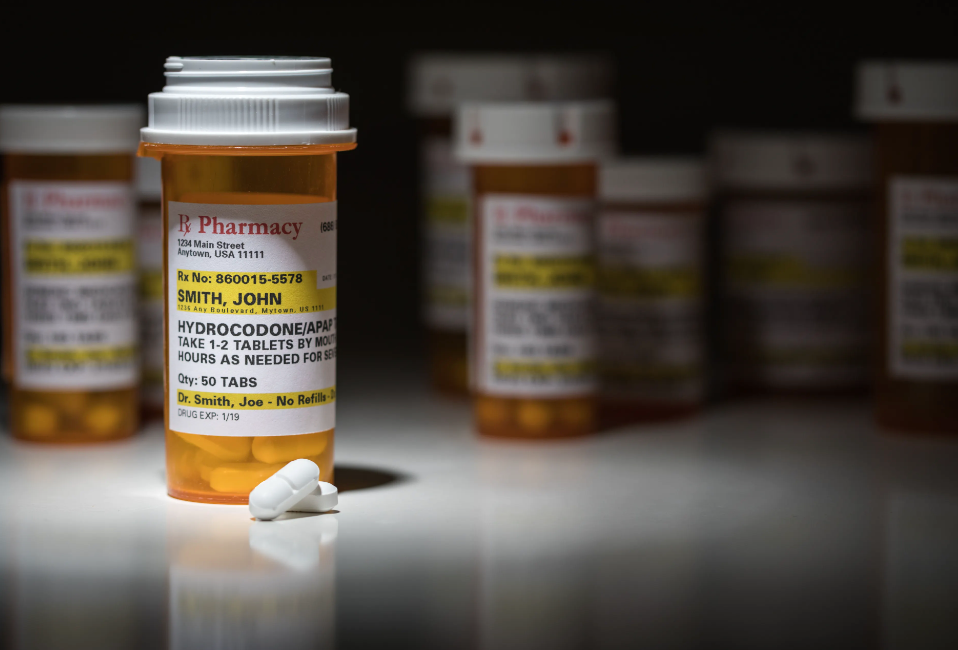Article
Taking Gabapentin With Opioids for Acute Conditions Increases Risk of Opioid-Use Disorder
Author(s):
Health care professionals should educate patients that it is possible to effectively manage pain without opioids.
When prescribed with an opioid, non-opioid gabapentin (Horizant, GlaxoSmithKline and XenoPort, Inc; Gralise, Almatica Pharma LLC; and Neurontin, Pfizer) increases risk of opioid-use disorder (OUD) and opioid-related overdose, according to Dave Little, MD, physician informaticist at Epic, who discussed the risks associated with concurrent gabapentin and opioid prescriptions in an interview with Pharmacy Times. Little emphasizes the patient is not to blame—OUD is a complication of treatment that the medical community needs to take ownership of.
Credit: Andy Dean - stock.adobe.com.

Traditionally, gabapentin and other non-opioid-type medications were used for long-term chronic pain conditions, including anxiety, seizures, shingles, and diabetic neuropathy, as opposed to opioids, which were prescribed for short-term pain relief in acute situations, such as post-operative, according to Little.
However, some patients have acute conditions that turn chronic. Although prescribers try to help the patient transition from 1 medication type to another, there may be situations where patients are taking both medications together, Little said. Now gabapentin is recommended for acute situations—including surgical recovery protocols— to manage pain and reduce opioid use.
“The notion of using gabapentin in acute situations is a relatively new approach,” Little said during the interview. “Not all physicians are experienced with this type of treatment, and there are still gaps in the research supporting our understanding of this approach.”
Previous research has linked patients taking gabapentin and opioids together with an increased risk of opioid-related overdose; however, data on the prevalence of OUD in such situations has been limited. To address this topic further, Epic Research evaluated the likelihood of being diagnosed with OUD or having an opioid-related overdose with concomitant treatment of gabapentin and opioids.
After matching 1.5 million patients with gabapentin and opioid prescriptions to 2.1 million patients with opioid-only prescriptions, the team discovered that gabapentin with opioids increased risk of OUD or opioid-related overdose by 47% compared to opioid prescription alone.
In a second analysis, Little and team found that gabapentin prescribed before and after opioid prescription increased risk of OUD/opioid-related overdose more than prescriptions only before and only after treatment with an opioid. Further, they found that availability of opioids from non-prescribed sources can increase risk of OUD/opioid-related overdose.
Combining other non-opioid agents with opioids—such as benzodiazepine, which is used to treat anxiety and insomnia, with opioids—can have adverse outcomes and increase risk of OUD. Additionally, adding gabapentin to benzodiazepine and opioids can further increase this risk, according to Little.
Little noted there may be 2 biomechanical mechanisms that help to explain why the dual treatment increases risk of overdose and OUD:
- Opioids and gabapentin are sedatives that synergistically increase respiratory depression.
- Opioid treatment may cause a decrease in gastric motility which increases gabapentin absorption. This increases the risk of the effects of respiratory depression.
Gabapentin with over-the-counter analgesics, such as acetaminophen, conversely decreased risk of adverse outcomes. In addition, gabapentin taken before an opioid and not concurrently with an opioid did not pose as a high a risk in developing an OUD; however, more clinical trials are needed.
Generally, health care providers can significantly influence patient perception of opioids, according to Little. Their influence may help to improve medication-related outcomes.
“I think patients as a whole are increasingly aware of the risks of opioids, and if they are given appropriate counseling and engaged in a process of shared decision making, perception can be shaped around the notion that effectively managing pain without opioids is the safest way to go,” Little said.
Little explained further that there is a significant takeaway from this study that provides clarity on the topic for practicing physicians: “When treating a condition with a high likelihood of developing into a chronic pain scenario, start the gabapentin treatments at the beginning and try to bypass the opioids altogether,” Little said.
Reference
Little D, Stamp T, Vitek G, Barkley E. Opioids Plus Gabapentin Associated with Increased Risk of Opioid Use Disorder Over Opioids Alone. Epic Research. April 7, 2023. Accessed on May 15, 2023. https://epicresearch.org/articles/opioids-plus-gabapentin-associated-with-increased-risk-of-opioid-use-disorder-over-opioids-alone

FDA Approves Dupilumab, Marking First Targeted Therapy in a Decade for Chronic Spontaneous Urticaria





